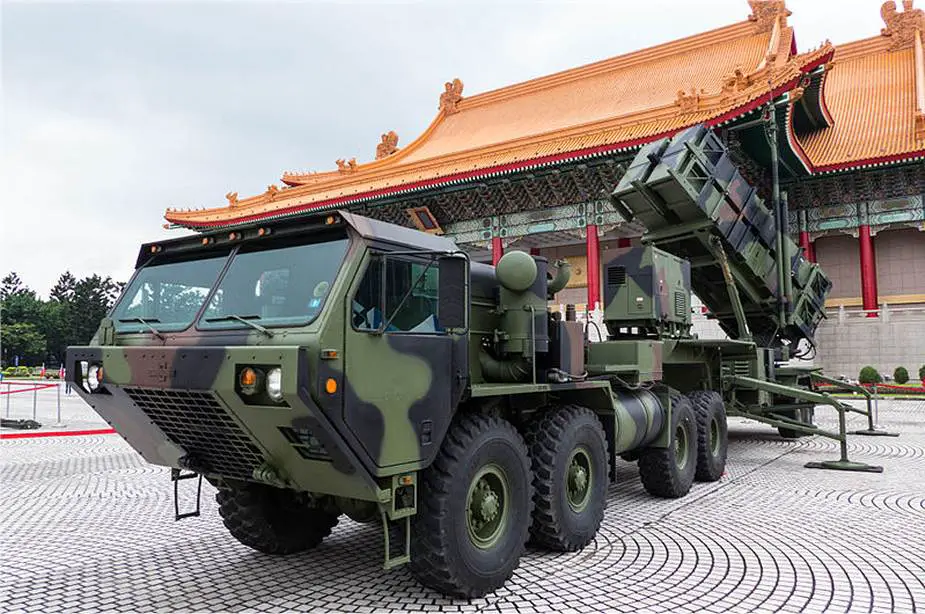As reported by Taiwan News on October 28, for the second time in three months, Taiwan signed a contract with the U.S. aimed at improving the efficacity of its Patriot PAC-3 missiles. The new NT$991.65-million (US$35.63-million) deal concluded by the Air Force followed a contract on Aug. 31 valued at NT$1.41 billion, for a total of NT$2.44 billion, the Liberty Times reported.
Follow Army Recognition on Google News at this link

Launcher unit of Patriot air defense missile system of the Taiwanese army. (Picture source: Wikimedia)
Maintenance and repair work on the missiles’ ground installations are the main focus of the latest contract. Taiwan has deployed 350 Patriot missiles, with agreements governing not just the missile systems, but also separate aspects such as technical support, maintenance, and transport to the U.S. for repairs. Taiwan was also planning to add an estimated 300 PAC-3 Missile Segment Enhancement (MSE) systems in 2025 and 2026, which are larger and have a longer reach.
A live-fire verification test of Taiwan’s Patriot missiles is carried out every two years, officials said, and it can only be performed in the U.S., due to security concerns. Therefore, the East Asian nation always sends a team to White Sands to carry out the drill. In spite of the fact that the United States has sent weapons experts to Taiwan in the last two years to support tests of US Patriot missiles sold to the island, Taiwan and Japan are the only countries that conduct missile tests in the U.S., according to Liberty Times.
The MIM-104 Patriot is a surface-to-air missile (SAM) system, the primary of its kind used by the U.S. Army and several allied nations. It is manufactured by the U.S. defense contractor Raytheon and derives its name from the radar component of the weapon system. The AN/MPQ-53 at the heart of the system is known as the "Phased Array Tracking Radar to Intercept on Target" which is a backronym for PATRIOT. The Patriot System replaced the Nike Hercules system as the U.S. Army's primary High to Medium Air Defense (HIMAD) system and replaced the MIM-23 Hawk system as the U.S. Army's medium tactical air defense system. In addition to these roles, Patriot has been given the function of the U.S. Army's anti-ballistic missile (ABM) system, which is now Patriot's primary mission. The system is expected to stay fielded until at least 2040.
The PAC-3 upgrade carries a new missile design, nominally known as MIM-104F and called PAC-3 by the U.S. Army. The PAC-3 missile is also more maneuverable than previous variants, due to 180 tiny pulse solid propellant rocket motors mounted in the forebody of the missile (called Attitude Control Motors, or ACMs) which serve to fine align the missile trajectory with its target to achieve hit-to-kill capability. The PAC-3 is the most advanced model, with a maximum interception range of 70 kilometers, and a maximum interception altitude of over 24 kilometers. The search range of its radar is 100 kilometers and can track 100 targets at the same time.
Patriot uses an advanced aerial interceptor missile and high-performance radar systems. Patriot was developed at Redstone Arsenal in Huntsville, Alabama, which had previously developed the Safeguard ABM system and its component Spartan and hypersonic speed Sprint missiles.














